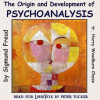Sigmund Freud - Three Contributions to the Theory of Sex
Sigmund Freud
100%
Speed
Psychology
1.1K
Summary
In this little book Freud discusses three areas of human sexuality: 1. Sexual pervisons or abberations. In this essay, Freud concludes that «a disposition to perversions is an original and universal disposition of the human sexual instinct and that...this postulated constitution, containing the germs of all the perversions, will only be demonstrable in children“.
2. His second essay on „The Infantile Sexuality“, argues that children have sexual urges, from which adult sexuality only gradually emerges via psychosexual development. Looking at children, Freud identified many forms of infantile sexual emotions, including thumb sucking, autoeroticism, and sibling rivalry in childhood.
3. In his third essay, „The Transformations of Puberty“, Freud formalized the distinction between the 'fore-pleasures' of infantile sexuality and the 'end-pleasure' of sexual intercourse. He also demonstrated how the adolescent years consolidate sexual identity under the dominance of the genitals in puberty.
Originally published in 1905, Freud added significant insights over the next three editions to increase the length to about double it's original size. This is the third and last edition published in 1920. (Summary by Phil Chenevert and Wikipedia)
More from Sigmund Freud
Authorization
By logging in, you agree to the terms and conditions.

















No comments